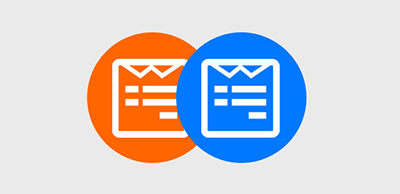Accounts Payable fraud remains one of the most common methods by which a company is robbed. Usually perpetrated by a business’ own staff, Accounts Payable fraud often remains undetected for a long time – find out how the right CRM system can help you take control.
Here are five ways to identify potentially fraudulent accounts activity:
1. Cheque to invoice comparison
 One of the simplest ways to defraud a company is to simply issue a cheque against an invoice for more than the billable amount. A casual glance at account balances shows that the invoice is paid and nothing is amiss. However, checking invoice values against the amounts issued on the cheques paying them will quickly highlight fraudulent activity.
One of the simplest ways to defraud a company is to simply issue a cheque against an invoice for more than the billable amount. A casual glance at account balances shows that the invoice is paid and nothing is amiss. However, checking invoice values against the amounts issued on the cheques paying them will quickly highlight fraudulent activity.
2. Identify duplicate payments
 Issuing duplicate payments for invoices is quite common. Most honest suppliers will simply return duplicated cheques for destruction. However, fraudsters may be issuing duplicate payments deliberately so that they can be cashed for profit.
Issuing duplicate payments for invoices is quite common. Most honest suppliers will simply return duplicated cheques for destruction. However, fraudsters may be issuing duplicate payments deliberately so that they can be cashed for profit.
3. Analyse threshold payments
 Most businesses operate a payment threshold scheme where invoices below a certain value do not need authorisation. As a result, fraudsters will issue fake invoices just below this threshold to prevent suspicions being raised. Your AP team should routinely check invoices with values just below authorisation levels.
Most businesses operate a payment threshold scheme where invoices below a certain value do not need authorisation. As a result, fraudsters will issue fake invoices just below this threshold to prevent suspicions being raised. Your AP team should routinely check invoices with values just below authorisation levels.
4. Benford’s Law
 Also known as the “first-digit law”, this statistical observation relates to the frequency distribution of digitals in data. In virtually any data set, the first digit of any number will be 1 about 30% of the time. Each first digit of an invoice total has a similar statistical likelihood. If your invoices have a frequency which deviates from Benford’s law, it is highly likely that something is amiss and you need to do a deeper audit to identify where the problem lies.
Also known as the “first-digit law”, this statistical observation relates to the frequency distribution of digitals in data. In virtually any data set, the first digit of any number will be 1 about 30% of the time. Each first digit of an invoice total has a similar statistical likelihood. If your invoices have a frequency which deviates from Benford’s law, it is highly likely that something is amiss and you need to do a deeper audit to identify where the problem lies.
5. Invoice volume activity
 Regular customers will have received invoices of a fairly regular volume over a fairly regular frequency. If you notice that some clients have started receiving many more invoices than normal, it is possible that their account is being used to channel fraudulent transactions.
Regular customers will have received invoices of a fairly regular volume over a fairly regular frequency. If you notice that some clients have started receiving many more invoices than normal, it is possible that their account is being used to channel fraudulent transactions.
Any five of these indicators will show your business where to look should Accounts Payable fraud be suspected. For the best results, however, each of these techniques should be employed routinely to identify fraud or stop fraud even before it is suspected.
What does any of this have to do with CRM software systems?
By uniting CRM accounts and financial data, your business has an additional source of data which can help track anomalies that point to fraudulent activity. CRM software systems typically store information such as:
- Full communications history.
- Values of sales opportunities.
- Values of quotes supplied.
This CRM accounts data can then be compared to the Accounts Payable information to identify where invoice details do not correlate to those on customer quotes, for instance. Additionally, an audit of the communications stored in the CRM software systems can often catch emails traded between less careful conspirators.
